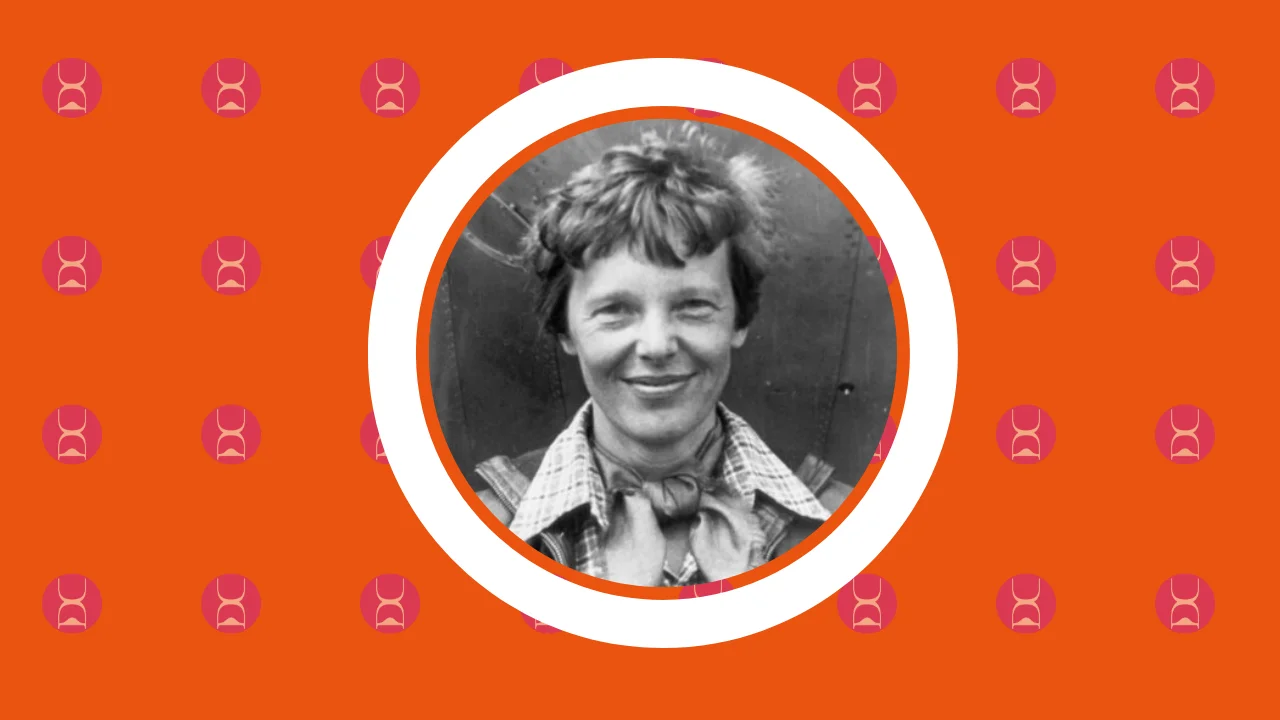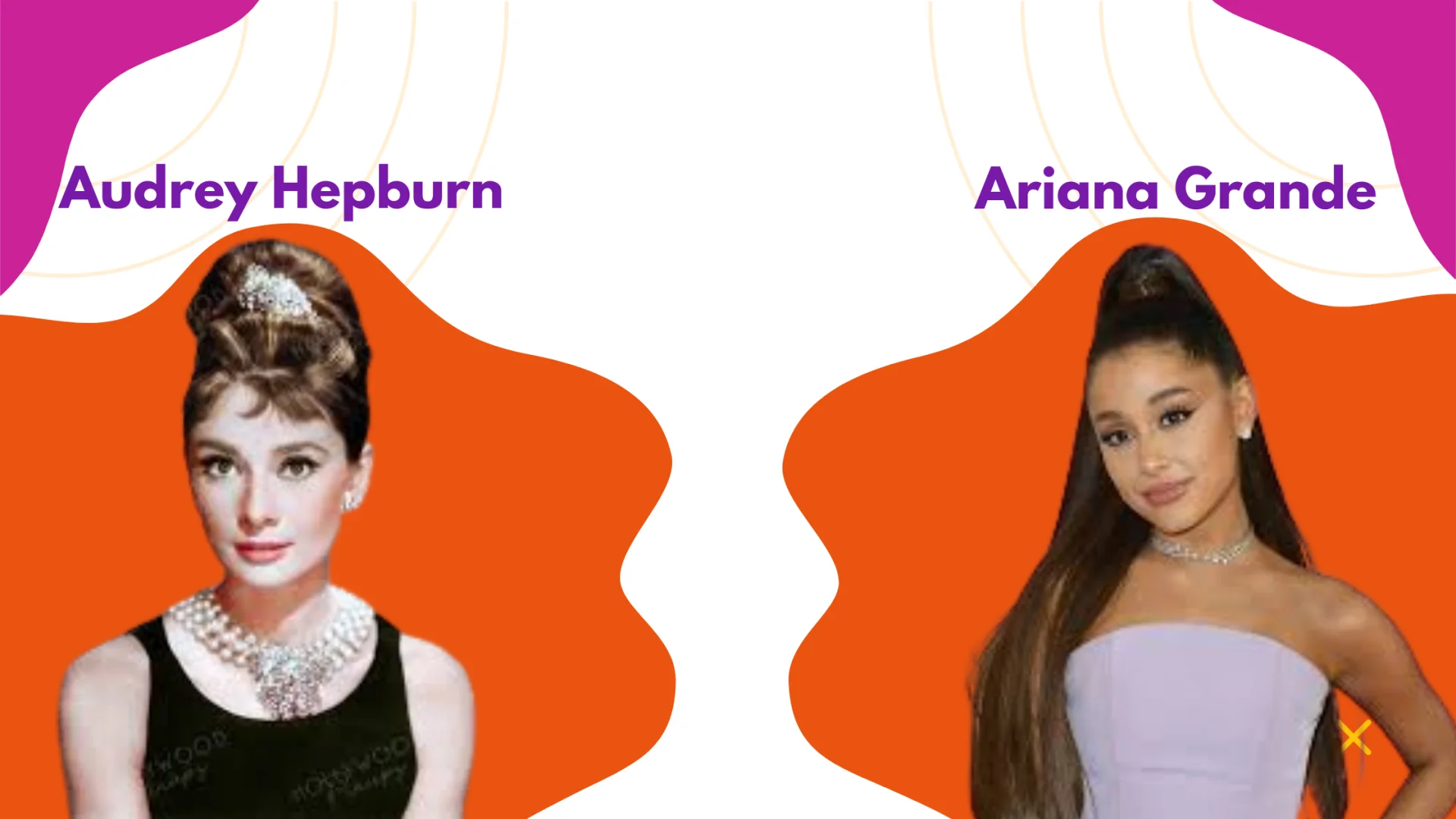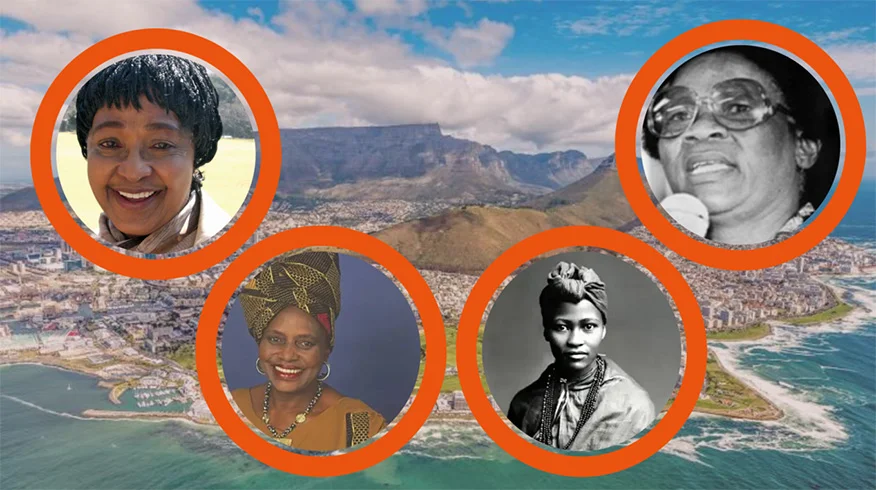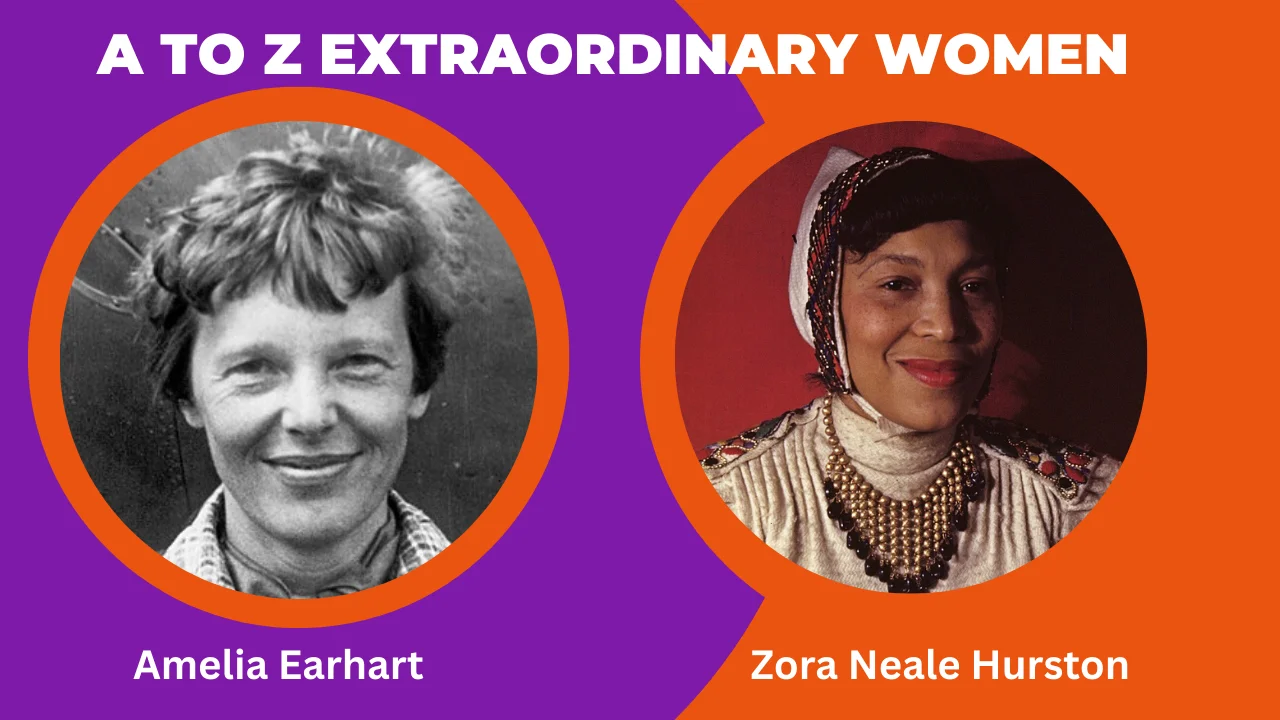Amelia Earhart: The Woman Who Conquered the Skies
29 Mar 2025
Featured

The aviation industry is one of the few industries where you will not likely see women actively working. Regardless of this, a good number of women have ventured into the aviation industry and have done impactful work as aviators. One of them is the famous Amelia Earhart. She was one of the aviation pioneers in America.
Amelia Earhart was an American Aviator. She was also famous for setting world records such as being the first female aviator to fly solo across the Atlantic Ocean.
Earhart was also known for being among the first aviators to promote commercial air travel and even wrote a best-selling book about her flying experiences. She also played a vital role in building the Ninety-Nines, an organization for female pilots.
Amelia Mary Earhart was born on 24 July 1897 in Atchison, Kansas, as the daughter of Samuel Stanton Earhart and Amelia. She was the second child of her parents after a stillbirth in 1896. Earhart also came from a family of German descent.

source: wikipedia[/caption]
Amelia Earhart was an adventurous child and always eager to explore her neighbourhood. As a child, she would spend hours climbing trees, hunting rats with a rifle, and sledding downhill.
As a result of this, some biographers characterize her as a tomboy.
Motivated by her passion for adventures, Earhart constructed a homemade ramp fashioned after a roller coaster she had seen on a trip to St. Louis, Missouri, and secured it to the roof of the family tool shed with the help of her uncle in 1904.
Shortly after this, Earhart's father got transferred to Des Moines, Iowa. The following year, when Amelia was 10, she saw her first aircraft at the Iowa State Fair in Des Moines.
Amelia Earhart and her sister didn't move to Des Moines with their parents after their father's transfer. The two girls remained with their grandparents in Atchison.
During this period, Earhart and her sister received homeschooling from their mother and a governess. Earhart also grew fond of reading books and would spend hours in their family library.
Later, in 1909, Earhart and her sister reunited with their parents and were enrolled in a public school for the first time.

Source wikipedia[/caption]
[Earhart in her first training plane, 1920]
Shortly after Earhart and her sister reunited with their parents, the family suffered a financial crisis when Earhart's father was forcefully retired from his job due to being an alcoholic.
Although Earhart's father attempted to go for rehabilitation, his place of work never reinstated him. This incident was one of the things that ended Earhart's happy childhood.
Earhart's father later went back searching for a job. In 1915, after a long search, he found another job as a clerk at the Great Northern Railway in St. Paul, Minnesota, where Amelia entered Central High School as a junior.
Shortly after getting the job, Earhart’s father applied for a transfer to Springfield, Missouri, in 1915, but the current claims officer reconsidered his retirement and demanded his job back. Earhart’s father was left unemployed.
Due to this development, Earhart’s mother, Amy, took her daughters to Chicago, where they lived with friends. While in Chicago, Earhart canvassed nearby high schools in Chicago to find the best science program. She rejected the high school nearest her home, complaining the chemistry lab was "just like a kitchen sink".
Amelia Earhart eventually enrolled in Hyde Park High School but experienced a miserable semester. Even the yearbook described her as the girl in brown who walked alone when she graduated in 1916.
After finishing high school, Earhart began junior college at Ogontz School in Rydal, Pennsylvania, but did not complete her program.
Earhart started her career journey as a nurse. In 1917, Earhart visited her sister in Toronto, Canada, where she saw wounded soldiers returning from World War I. Earhart quickly took a training class as a nurse’s aide from the Red Cross. The training enabled her to work with the Voluntary Aid Detachment at Spadina Military Hospital. At the hospital, She assisted with food preparation for patients with special diets and handed out prescribed medication in the hospital's dispensary.
While working at the hospital, she was opportune to hear military pilots tell their stories. These stories made her develop an interest in flying.

source: wikipedia[/caption]
In 1918, there was an outbreak of Spanish flu in Toronto and Earhart engaged in her nursing duties, which included night shifts at the Spadina Military Hospital. But along the line of performing her duties, she became infected and was hospitalized for pneumonia and maxillary sinusitis. She was discharged in December 1918, about two months later.
Right before her discharge from the hospital, Earhart had a painful minor operation to wash out the affected maxillary sinus. The procedure was not successful, as the effect of the illness affected her in later life, especially in her flying activities, as she forcefully wore a bandage on her cheek to cover a small drainage tube.
After getting much better in 1919, Earhart prepared to enter Smith College, where her sister was a student. However, she changed her mind and enrolled in a course of medical studies and other programs at Columbia University.
Unfortunately, Earhart quit her studies a year later to be with her parents, who had reunited in California.
At a young age, Earhart gained many flying experiences. In the early 1920s, Earhart and a friend visited an air fair conducted in conjunction with the Canadian National Exhibition in Toronto. She was so delighted to see the flying exhibition put on by a World War I ace.
Experiment! Meet new people. That’s better than any college education. By adventuring, you become accustomed to the unexpected. The unexpected then becomes what it really is inevitable - Amelia Earhart.
Later, in 1920, Earhart and her father attended an "aerial meet" at Daugherty Field in Long Beach, California. At the event, Earhart told her father to ask about passenger flights and flying lessons. The following day, Earhart was booked for a passenger flight at Emory Roger's Field, at the corner of Wilshire Boulevard and Fairfax Avenue.
Earhart had a 10-minute flight with Frank Hawks (who gained fame as an air racer). According to Earhart, this flight with Hawkes changed Earhart's life. This experience made her conclude that she had to fly.
As soon as we left the ground, I knew I had to fly - Amelia Earhart.
The following month, Earhart engaged Neta Snook to be her flying instructor. She had an initial contract and agreement for 12 hours of instruction for $500. To attend the flying lessons, Earhart engaged herself in numerous jobs such as photographer, truck driver, and stenographer at the local telephone company, which enabled her to save up to $1000.
Earhart had her first flying lesson on January 3, 1921, at Kinner Field on the west side of Long Beach Boulevard and Tweedy Road, now in South Gate. After Six months of learning and with Snook’s advice, Earhart purchased a secondhand, chromium-yellow Kinner Airster biplane, which she nicknamed "The Canary".
Lesson 1: Curiosity and Exploration - Earhart's passion for aviation started from her curiosity and ability to explore. These led her to develop an interest in taking flying lessons and later purchase her first plane to enable her to explore more.
On October 22, 1922, Earhart flew the Airster to an altitude of 14,000 feet (4,300 m), setting a world record for female pilots. On May 16, 1923, Earhart became the 16th woman in the United States to be issued a pilot's license (#6017) by the Fédération Aéronautique Internationale (FAI).
After enrolling for the flying lesson, Earhart and her family suffered from financial problems. At first, they depended on Earhart’s inheritance left to her by her grandmother and administered by her mother until the funds were exhausted. With no immediate prospect of making a living from flying yet, Earhart sold her plane.
Lesson 2: Resilience in the Face of Challenges -It wasn't all rosy for Earhart and her family. Earhart's family faced numerous financial challenges, with her father losing his job and her inheritance being exhausted. All of these greatly affected Earhart’s education and her dreams of flying. But the financial challenges didn't stop her. She was determined to overcome them and still reach her goals.
At the same time, Earhart’s parents divorced in 1924. She had to drive with her mother in "Yellow Peril" on a transcontinental trip from California with stops throughout the western United States and northward to Banff, Alberta, Canada and finished in Boston, Massachusetts.
While in Boston, Massachusetts, Earhart returned to Columbia University for several months but was forced to abandon her studies and any further plans for enrolling at the Massachusetts Institute of Technology (MIT) because her mother could no longer afford the tuition fees and associated costs.
To assist with their expenses at the time, Earhart worked as a teacher first and later as a social worker at Denison House, a Boston settlement house. While at these jobs, Earhart still maintained her interest in aviation. She became a member of the American Aeronautical Society's Boston chapter. She eventually became a vice president there.
Earhart invested a small sum of money in the Dennison Airport after her official flight out of the airport in 1927. She also worked as a sales representative for Kinner Aircraft in Boston and wrote local newspaper columns promoting flying.
To kick-start her aviation career, Earhart was the first female to cross the Atlantic Ocean in an airplane in 1928. She worked with project coordinators like publisher and publicist George P. Putnam.
On June 17 1928, Earhart was a passenger in the plane flown by Wilmer Stultz and copilot/mechanic Louis Gordon. On this flight, Earhart and the team departed from Trepassey Harbor, Newfoundland, in a Fokker F.VIIb/3m named "Friendship" and landed at Pwll near Burry Port, South Wales, exactly 20 hours and 40 minutes later.
The duration of this flight later became the title of her book about the expedition 20 Hrs. 40 Min.
Unfortunately, Earhart didn’t get the opportunity to fly the plane due to a lack of training in flying that kind of aircraft. In an interview after they landed, she had this to say about the experience - "Stultz did all the flying—had to. I was just baggage, like a sack of potatoes. Maybe someday I'll try it alone.
The early flying experiences of Earhart made her become a celebrity. Earhart became famous. The press refers to her as Lady Lindy because of her physical resemblance to the famous male aviator Charles Lindbergh and "Queen of the Air".
After she returned to the United States from her flight, Earhart went on an exhausting lecture tour in 1928 and 1929.
Her project coordinator, Putnam, took it upon himself to heavily promote Earhart in a campaign that included publishing the book she wrote, a series of her new lecture tours and using her pictures in media endorsement for product promotions like luggage.
Earhart and Putnam were involved in numerous marketing campaigns. As time went on, Earhart did not only endorse the products, she became actively involved in the promotion, especially in women's fashion. These celebrity endorsements helped Earhart finance her flying adventures.
Earhart was also actively involved in promoting aviation. In a demonstration of this, Earhart accepted a position as associate editor at Cosmopolitan and used it to campaign for greater public acceptance of aviation, focusing on the role of women entering the field.
Earhart, alongside Margaret Bartlett Thornton, was appointed by Transcontinental Air Transport (TAT) to promote air travel, particularly for women, in 1929.
Earhart helped to set up the Ludington Airline, the first regional shuttle service between New York and Washington, D.C. She was also appointed the vice president of National Airways.
Earhart had also experienced numerous competitive flying, like being the first female to fly solo across the North American continent and back and attempt competitive air racing in 1929 during the first Santa Monica-to-Cleveland Women's Air Derby and numerous other flyings.
In 1932, Earhart made history by becoming the first woman to make a nonstop, solo, transatlantic flight. The flight set off on May 20, 1932, from Harbour Grace, Newfoundland, with a copy of the Telegraph-Journal given to her by journalist Stuart Trueman to confirm the flight's date. She got the motivation for this solo flight by trying to emulate Charles Lindbergh's solo flight five years earlier.
Women, like men, should try to do the impossible. And when they fail, their failure should be a challenge to others - Amelia Earhart.
To make the flight successful, Earhart's technical advisor Brent Balchen, a Norwegian-American aviator, helped her to prepare the aircraft and played decoy for the press.

source: New York World-Telegram and the Sun Newspaper Photograph Collection/Library of Congress, Washington, D.C. (LC-USZC4-2758)[/caption]
This flight lasted for 14 hours and 56 minutes, during which she contended with strong northerly winds, icy conditions and mechanical problems. Earhart landed in a pasture at Culmore, north of Derry, Northern Ireland, with Cecil King and T. Sawyer as eyewitnesses.
As the first female to fly solo nonstop across the Atlantic, she was awarded the United States Distinguished Flying Cross.
Lesson 3: Fearlessness and pioneering spirit: Earhart grew up as an adventurous child. She learnt how to conquer her fears and pioneer initiatives. These characteristics made her embark on becoming the first woman to fly solo across the Atlantic successfully.
Earhart was also involved in numerous solo flights after this one.
Earhart married George Putnam (a divorcee who sought out Earhart, proposing to her six times before she agreed to marry him) in 1931. The marriage was one Earhart viewed more as a partnership with dual control.
Earhart's ideas on marriage were liberal for the time, as she believed in equal responsibilities for both breadwinners and kept her name rather than being referred to as Mrs. Putnam.
While the marriage lasted, the two did not have children, but Putnam had children from his previous marriage.
Years after her solo nonstop flight across the Atlantic, Earhart attempted to become the first female pilot to circumnavigate the world in 1937. But this unfortunately led to her disappearance.
The flight journey started in 1936 when Earhart began planning on how to fly across the world. Succeeding at this attempt would have made her the first female to do so.
In preparation for this flight, Earhart purchased a new plane (Lockheed Electra 10E airplane) with the funds she got from Purdue University. Earhart also chose Harry Manning as her navigator.
Earhart's original plan for the flight was a two-person crew where she would fly while Manning would navigate. However, a flight test conducted by Mantz and Putnam before Earhart World's flight showed that Manning may not be super skilled in navigation. The Duo wanted a better navigator for Earhart.
Fred Noonan later became the second navigator chosen for the flight. Noonan had a much better experience with flight navigation.
On March 17 1937, Earhart and her crew embarked on their first attempt at her intended world flight. Unfortunately, this first attempt was abandoned after a non-fatal crash damaged the aircraft. This first attempt was supposed to be between Oakland, California, and Honolulu, Hawaii. The crew members for this flight included Earhart, Noonan, Manning, and Mantz, who was acting as her technical advisor.
After the first failed attempt, Earhart decided to go for a second attempt. And again, Earhart and Putnam secured additional funds for this second attempt. Earhart started the attempt with an unpublicized flight from Oakland to Miami, Florida, with plans to fly west to east.
It was in this attempt that Earhart announced her plan to circumnavigate the globe. This time, her crew only consisted of Nooan as Manning, the skilled radio operator, had left the group.
Firstly, they completed nearly 22,000 miles of the flight, stopping in South America, Africa, India, and Lae, New Guinea.
After a month, they resumed the flight from Lae. Earhart's destination this time was Howland Island, a tiny island in the Pacific 13,200 feet long and 2,650 feet wide.
Unfortunately, the duo could not find the island. To make matters worse, they lost radio contact with the Coast Guard cutter Itasca, who could hear they were lost but could not return communication.
This led to their disappearances over the Pacific Ocean. In an attempt to find them, President Roosevelt issued a massive search for Amelia and Noonan. Earhart’s husband, George Putnam, also financed his search until October 1937, but their efforts were unsuccessful.
After the unsuccessful efforts to find Earhart, she was later declared legally dead in a court in Los Angeles on 5 January 1939.
Reference
Tags
Women
Adventure
Courage
Aviator
Latest Posts
Tags
- Women27
- Scientist9
- Author6
- Inventor3
- Nobel3
- Singer3
- Actor2
- Activist2
- Physicist2



